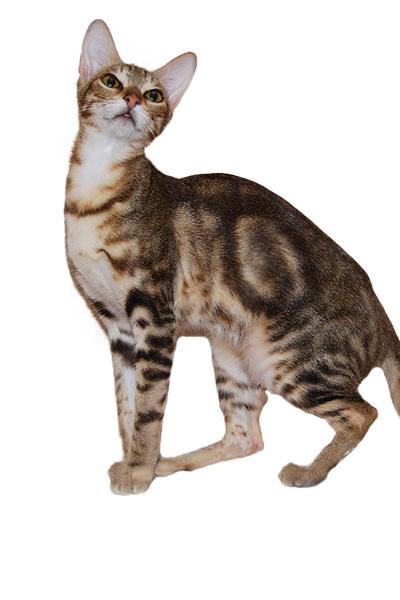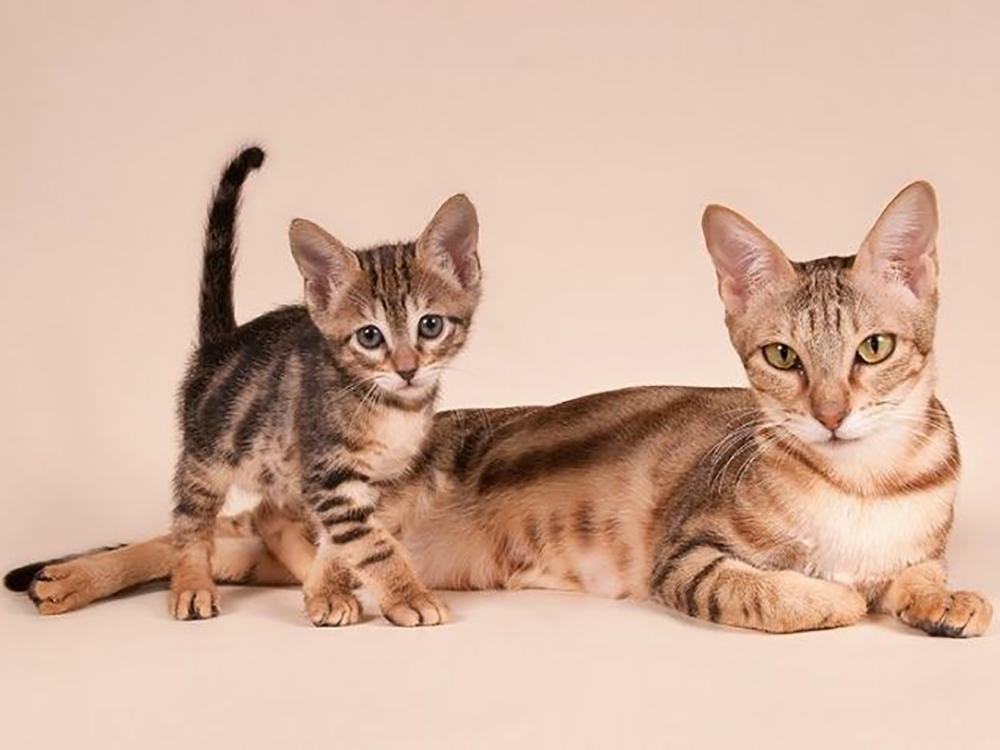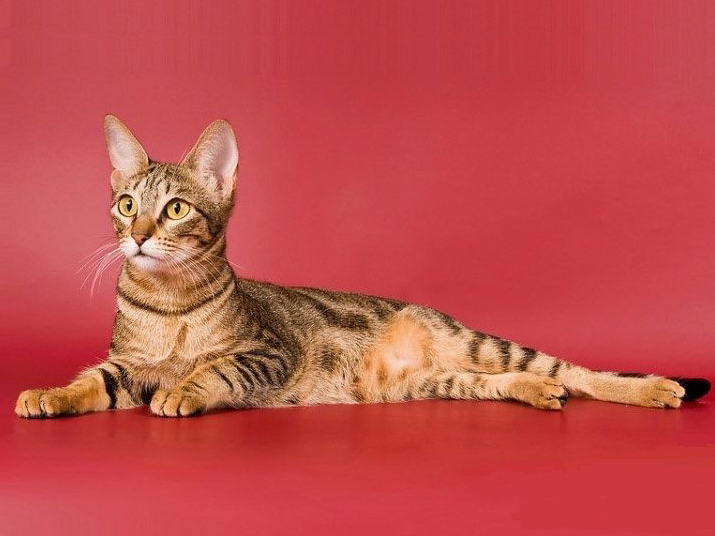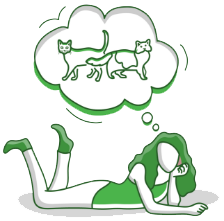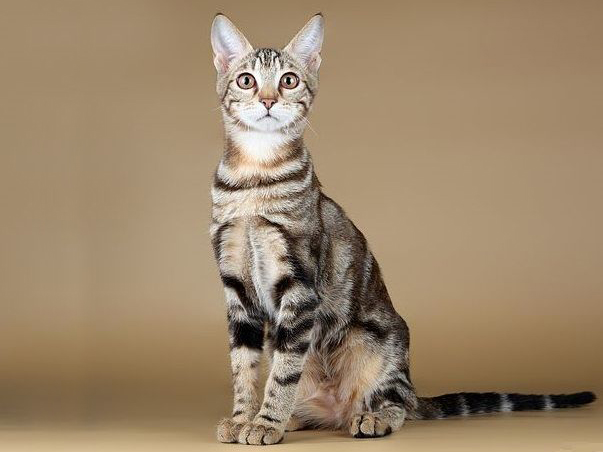
Sokoke Breed Pictures
Vital Breed Stats
| Weight: | 3 - 5 kg M | 3 - 5 kg F |
| Life Expectancy: | 12 - 15 years |
Breed Characteristics
| Size: |  |
| Grooming: |  |
| Trainability: |  |
| Good with Children: |  |
| Good with other pets: |  |
| Affectionate: |  |
| Active Level: |  |
Give a thumbs up if you love the Sokoke

0
More About the Breed
History
The Sokoke’s ancestor is a mystery. Genetic tests revealed a common DNA with cats from the island of Lamu, Arabian wildcat, and the street cats of coastal Kenya. Even though it shares some of the common traits of the aforementioned breeds, the Sokoke has its own distinctive feature. It is often described as a cat that looks like a tree bark, which is the English translation of “Khadzonzo,” its native name.
Apart from the Giriama natives, a horse breeder named Jeri Slater found a couple of Sokoke cats on her coconut plantation. Seeing its unusual features, Slater took an interest in breeding and developing the Sokoke.
In 1984, Slater’s friend Gloria Moeldrup brought the cats to Europe. It was eventually recognised as a breed in 1994 by the Fédération Internationale Féline (FIFe). Years later, it became popular among cat enthusiasts and breeders. Jeannie Knocker and her son were the first to bring Sokoke cats into the US in 2001. Eventually, the breed was accepted for registration in The International Cat Association (TICA) in 2004, and in May 2008, it received the status of “Preliminary New Breed.” But it wasn’t until 2015 when the breed reached the Preliminary Recognition by Governing Council of the Cat Fancy (GCCF).
Appearance and Grooming
Some cat associations such as TICA only accept the colour of a brown classic tabby. However, the GCCF accepts both the brown classic tabby and the snow Sokoke, which has a paler body colour than the former.
As a medium-sized feline, the Sokoke can weigh between 8–12 pounds. Similar to other breeds, males are significantly larger than the Sokoke females. The Sokoke is an athletic cat with a long and muscular body. Its legs are long and slender with well-angled hind legs that it has a “tiptoe” gait. It has a muscular tail from base to the tip.
Its eye colour varies from amber to light green, with a black outline and appears slightly almond-shaped. The snow Sokoke usually has light blue or bluish grey eyes. The shape of its muzzle may appear bulky, which gives a smooth look on its frontal view with well-defined cheekbones. The head and ears are smaller in relation to its body.
Further, it has a very short coat that lies close to its body. Hence, it can be sensitive to cold temperature. It has an apparent coat of classic tabby markings. Ticking all over the pattern areas is its distinguishing feature as a breed.
Being a shorthaired feline, it requires little maintenance. Introduce brushing once a week along with the basic grooming, such as regular nail trimming, teeth brushing, and ear cleaning to your feline. The earlier these grooming routines are introduced, the better.
Temperament and Intelligence
The Sokoke is not the type that would sit around and be a lap cat. Instead, it has a doglike trait, following its owner around the house. It is playful and active. It can be seen perching near a window, either observing the environment or waiting for the arrival of its owner.
Further, the Sokoke is intelligent, highly territorial, and is sensitive to human emotions. It is known to comfort its owner after a bad day. At times, the mood of its owner reflects its own. It is also described as vocal and talkative that it can converse with its humans for hours. It is also in their nature to form an unwavering bond with its owner or other pets in the same house. As such, it can have a tough time adjusting when someone in the family leaves or a new owner comes along.
One of its interesting behaviours is that the sire of the litter, if not separated, would help rear its kitten. In fact, it can often be seen lying down along with the Sokoke kittens and the queen.
Nutrition and Feeding
The Sokoke cat should be provided with a nutritious diet that fulfils its nutritional needs. It should be consistently given the same food following the same feeding schedule. If there are changes to its diet, those must be done gradually to prevent digestive problems.
The serving portions should depend on the cat’s weight, age, and activity level. Its diet must include at least 25 per cent protein and just 5 per cent carbohydrates.
Health and Exercise
On average, the Sokoke’s life expectancy ranges from 9–15 years. This cat breed is amongst the healthiest and not known to be affected by hereditary health issues.
However, the first generation of Sokoke that came from Kenya were prone to acquire infections. It seems these cases are resolved with the new generations of Sokoke cats.
It is important that this feline gets enough exercise and its diet are well-managed to prevent it from becoming overweight. Being an athletic breed, it should be provided with toys and activities that will also challenge its mental abilities.
Cost of Ownership
Is a Sokoke Right for You?
- A Sokoke is a low-maintenance cat having a low-shedding coat.
- It is very perceptive on humans and would often comfort its owner.
- It is playful and athletic.
- It is best to be kept as an indoor pet provided the area is escape-proof.
- This cat cannot handle cold climate.
